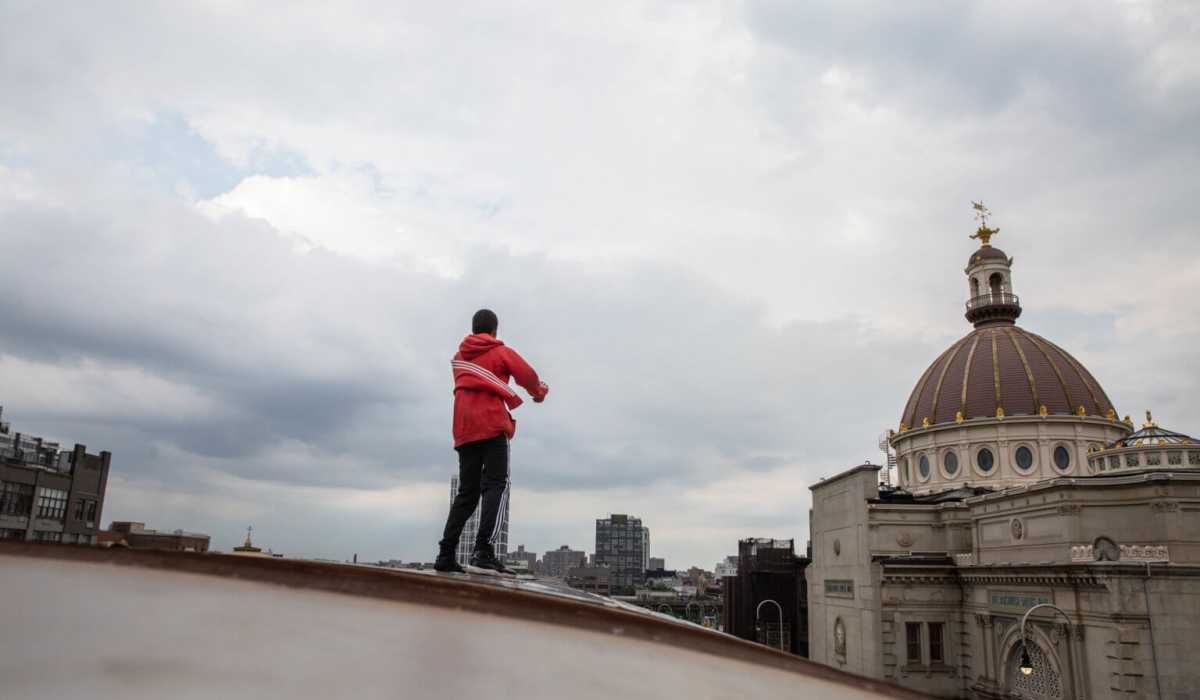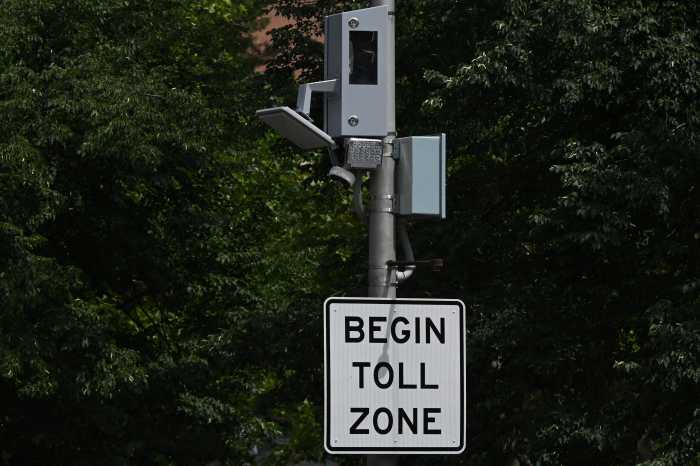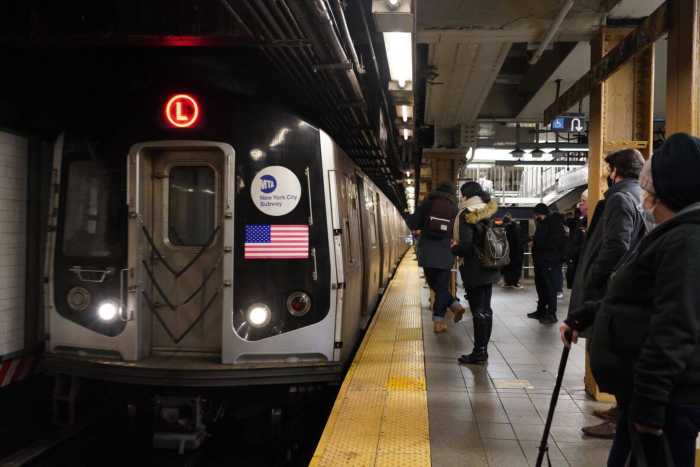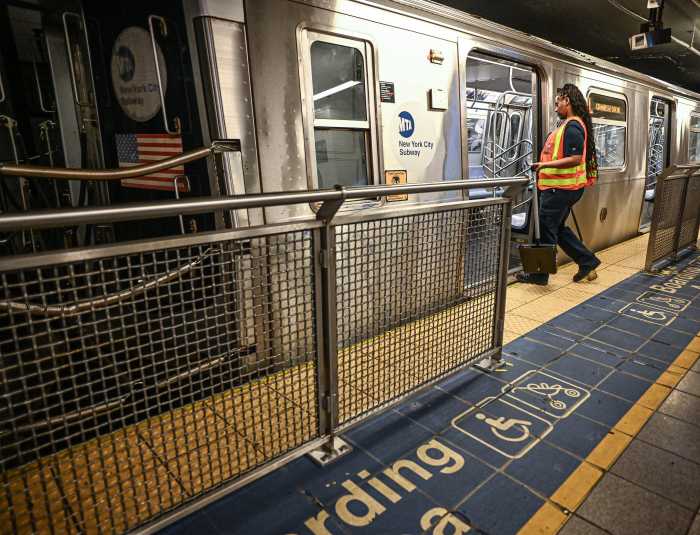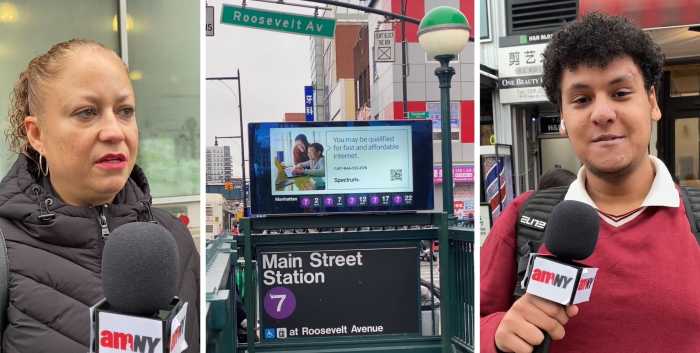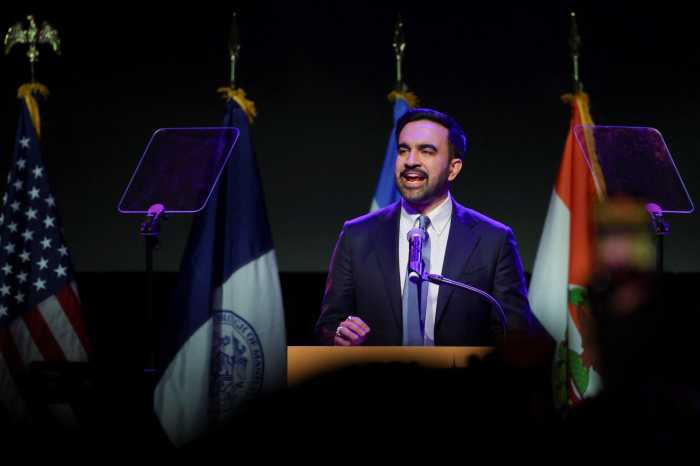The city and MTA launched on Tuesday a new campaign aimed at deterring youth from deadly subway surfing — hoping to convince curious adolescents with messages developed and delivered by their peers.
The new campaign, “Subway Surfing Kills – Ride Inside, Stay Alive,” was developed this summer by students at the High School of Art & Design and has already begun rolling out on the 7, J, M, and Z lines, all of which have extensive portions of their route on elevated tracks and are popular subway surfing spots.
Since teenagers tend to do the opposite of what adults suggest, audio announcements at stations are narrated by teens themselves, in the hope that their peers might listen.
“I’m teaming up with the MTA to spread awareness about the dangers of subway surfing,” says 16-year-old Manhattanite Jerianese Correa in a public address announcement playing at elevated subway stops. “The consequences are serious and could be fatal. Don’t lose your life. Ride inside, stay alive.”
In addition to public address announcements, other student-created media for the campaign include digital signage and graphics at subway stations, palm cards distributed at schools, and school supplies bearing the campaign’s insignia.
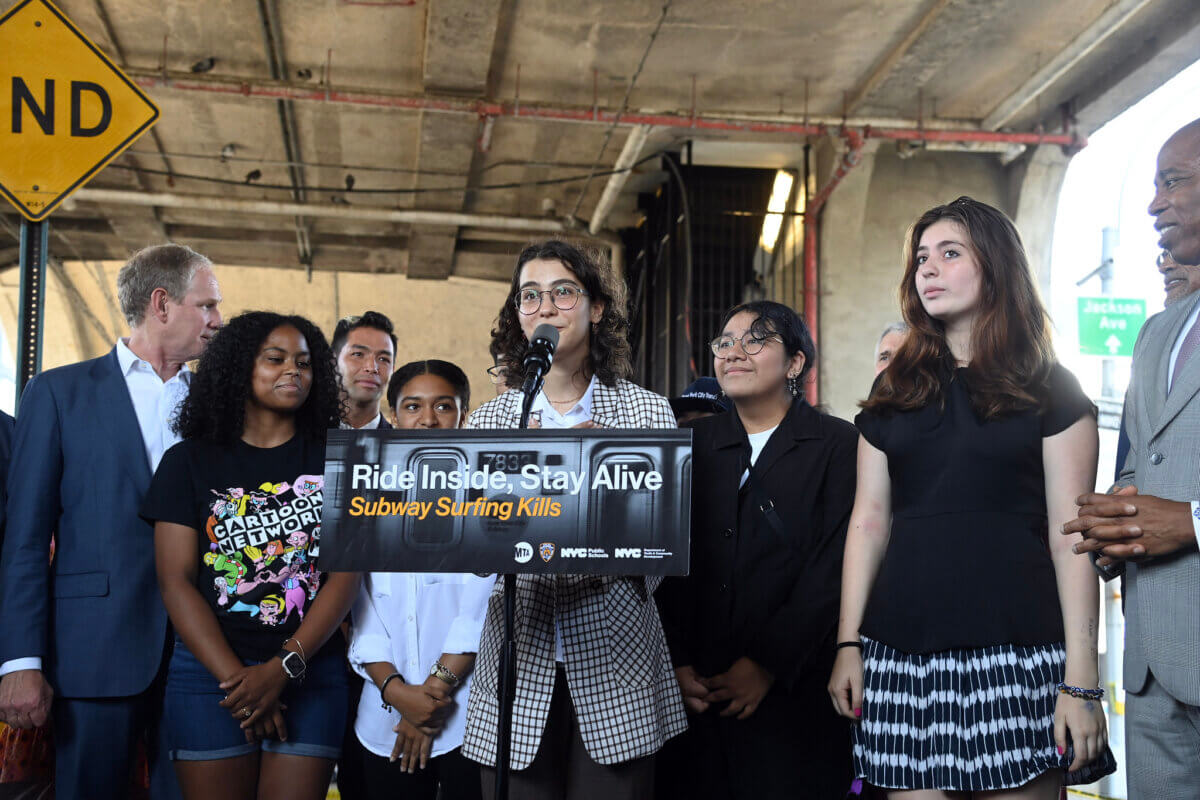
Five teens, some as young as 14, have lost their lives in 2023 while subway surfing, according to NYPD Transit Bureau Chief Michael Kemper. Prevalence of the dangerous activity is rising, Kemper reported; 88 people have been arrested for subway surfing in 2023, a nearly 200% jump from the numbers seen at this point in 2022.
Despite the fundamental dangers, thrill-seeking adolescents are still drawn to subway surfing, potentially due to a wave of content glorifying it on social media that ends up in their feeds.
Mayor Eric Adams admitted to reporters that as a youth, he sometimes hitched a ride on the back of the Q5 bus, but the difference is that while his antics were limited to where they took place, today’s subway surfing is blasted to millions of impressionable children.
“Doing something that’s reckless is part of being young. I can only think of some of the dumb things I did as a child,” said Hizzoner. “But the difference of now and then is that when I did something dumb, it stayed on the block, it stayed to 35 people. Now, these children, when they do something, it expands to 35 million people.”
The MTA says that social media platforms like YouTube, TikTok, Instagram, and Snapchat have removed over 3,000 videos and photos depicting subway surfing since this spring, at officials’ request.
In their place, teens will start seeing media associated with the “Ride Inside, Stay Alive” campaign on social media, officials say, with the companies adjusting their algorithms to get them distributed to the right places.
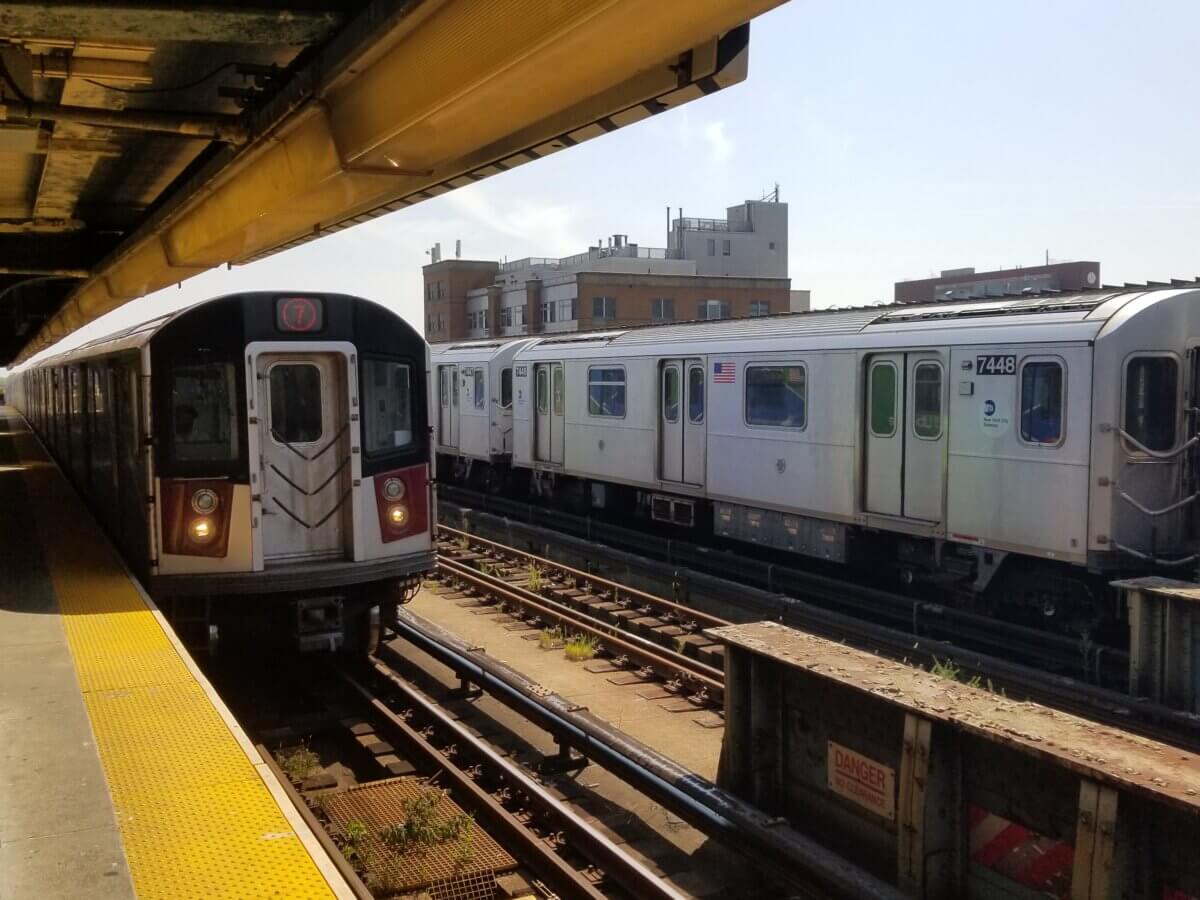
“We went to the best thinkers around social media, and those are our New York City youth,” Mayor Adams said. “There’s one thing I learned when I was young: if my parents said no, I did yes. And the mere fact that Janno [Lieber] and I, and the Chancellor and the Chief tell young people no, that is not enough. It is about peer-to-peer communication, interaction, to stop this horrific action that is taking lives.”
Police have also been deployed to stops on elevated lines with high incidence of subway surfing, like the 7 and the J. Cops also sometimes visit youth at their homes if they see videos of them subway surfing.
Milana Blokhina, a recent graduate of the High School of Art & Design and a leader of the development campaign, said she has noticed a downtick in content on social media depicting subway surfing, and hopes the campaign will lead her peers to make informed decisions.
“I really do feel that at the end of the day, it is important for you to understand the value of your life, that it matters, that it’s important, that it’s something you shouldn’t throw away for thrill or for views online,” said Blokhina. “That is hopefully something people will take away from this.”



